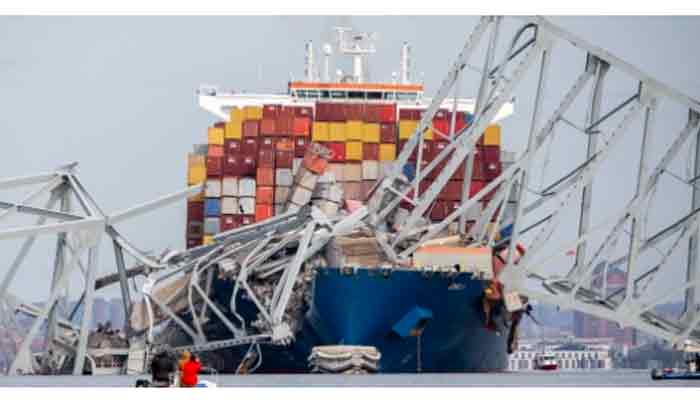
Under a nearly full moon and lightly cloudy skies, the Dali pulled away from the pier just before 12:45 a.m., aided by the sibling tugs Eric and Bridget McAllister.
Loaded with cargo containers from one of the nation’s busiest ports, the ship planned to steam east across the Atlantic Ocean and past the southern tip of South Africa before entering the Indian Ocean and making port in Sri Lanka.
Facing a 28-day journey − at least a week longer than if it had used the Suez Canal and the Red Sea − the captain and crew stocked up on personal items at a Baltimore Walmart on Sunday before they left.
They were in good spirits that day, said Andrew Middleton, a nonprofit seaman’s aid service director who took the men shopping Sunday. “We talked about the Red Sea,” Middleton said, “and how long the trip was going to take.”
Houthi rebels have been attacking cargo ships in the Red Sea, and the Dali’s captain planned to take the longer route for safety. Last year the ship sailed a distance very nearly the sum of the Earth’s circumference, hauling cargo to and from Asia.
Built in 2015 in Korea, the 985-foot-long ship was made to carry shipping containers, which can hold everything from televisions to SUVs. Company officials said there were 22 crew aboard the ship as it left, all of them Indian nationals.
With the Eric McAllister ahead and the Bridget McAllister astern, the Dali pulled a U-turn away from the Seagirt Marine Terminal and headed toward a pair of navigation buoys marking the channel.
Although the Dali can cruise around 22 mph, the captain, a harbor pilot and an apprentice pilot kept the speed about 9 mph as the tugs cast off their lines and returned to the port for their next assignment.
Their course would take them down the Patapsco River toward the Chesapeake Bay and then the open ocean. On its way down the river, the ship would slip beneath the Francis Scott Key Bridge. It would be a straight shot.






